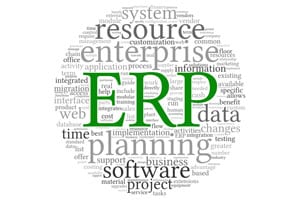Well, I just watched the 402nd project where management intended to have new operational procedures and training materials developed to accompany the major upgrade of a new ERP system. The procedures were not developed and the users went live on the new ERP system for call center and fulfillment operations.
We all know this go-live experience. The IT staff and help desk have weeks of go-live issues and frustrated users as they get acclimated to the new system and learn how they do their jobs differently. Departmental productivity may drop for three to six months. Unplanned overtime is requested and maybe turned down. Management is angry that this was not the objective they set for the project team.
I can’t tell you how many times I’ve heard “This system’s design is intuitive!” as an excuse for not writing procedures. These systems are so intuitive that management can’t seem to use them. Maybe it’s intuitive for Windows-based systems to some degree in terms of navigation and functions. Or it’s intuitive for those under 30 that have far more PC and web browser skills than mature workers.
But guess what – the new system’s table coding and structure isn’t intuitive at all. The system’s screens don’t tell the users how they are to use the system in doing their jobs. And most importantly, your company’s policies and procedures are not embedded in the system process, nor are they interpreted for the departmental users. To make matters worse, business with heavy peak sales that hire lots of seasonal employees can run the risk of mistakes and errors. Worse still, they may have to accept lower productivity without good procedures and training materials.
To help alleviate these issues, here’s a checklist of 9 action steps to take that will help ensure a smooth ERP system upgrade.
Procedures are vital part of the new processes and systems
Effective documentation supports the training and use of the new system. Without procedures, it may take six months or longer for the company to return to its former productivity levels or reach the new goals. Additionally, the customer would not be served uniformly if company policies and procedures are not developed and agreed upon. Examples include crushed cartons, cartons wrapped with packing tape so many times they look like a mummy, product damaged upon arrival because it didn’t have void fill, etc.
Differences in types of procedures
- Software vendors provide documentation about the system functionality. This can be extensive and not a resource you would ever turn over to the average hourly worker in order to understand how to use the system. However, it will be valuable for super-users and department managers. Education on systems capabilities in a formal classroom setting can take several weeks to even understand the basics. This type of documentation does not pass for what your company needs in terms of standard operating procedures and how the users are to do their work with the new system.
- Develop standard operating procedures. Best example: Procedural development of policies for customer service – replacement products, return policies, free shipping, etc.
- Develop training user procedures. These are “how to” instructions you use to train new systems users by explaining field-by-field and table-level detail. It includes comparisons of the old system and new systems. Examples: How to enter various orders; how to increase credit limits; managing pick process; returns processing, etc.
Documentation and help system
Most systems have strong help screen capabilities but it needs to be tailored to your documentation. As you’re selecting a system, consider these documentation objectives and determine how the documentation will reside online rather than hardcopy manuals.
Set up a training system
Be sure as you select systems, you have the licenses for three instances (or copies) of the system as part of your license agreement: Production, development and training. This enables trainers and users to play with the system, and not create production or development problems.
Plan time to develop documentation
A high percentage of the time, documentation is not planned early enough to get it accomplished. Build that time and the assignment into the plans.
Hands-on training and using procedures
An excellent way to train key users in every department is to give them responsibility for full system tests in a conference room pilot setting. Get them to design all the different types of transactions with known data. This is the very best way to not only test the system, but to also train the best system users and test your training materials.
Who will write the documentation?
Few companies have people tasked with writing procedures. We think the only way to get this done is to assign it to department managers. I can hear you now, some of them are not the best trainers. Well it’s essential for them to be involved and help their people make the transition.
Training your entire company
How are you going to teach everyone to manage the business with the new system? It’s a total culture change, and the procedures help support the organization and mitigate some of the risk.
Post implementation
Within a week or so of the go-live date, see who in the organization needs more training. Also evaluate where your procedures and training materials need improvement.
Procedures are a critical part of the process improvement and installation of a new ERP, OMS or WMS system. Without it you risk low initial use and lost productivity.
Curt Barry is Founder and Partner of F. Curtis Barry & Company. He will be moderating the Senior Executive Forum at Operations Summit 2016, April 12-14 at the Duke Energy Center in Cincinnati.

